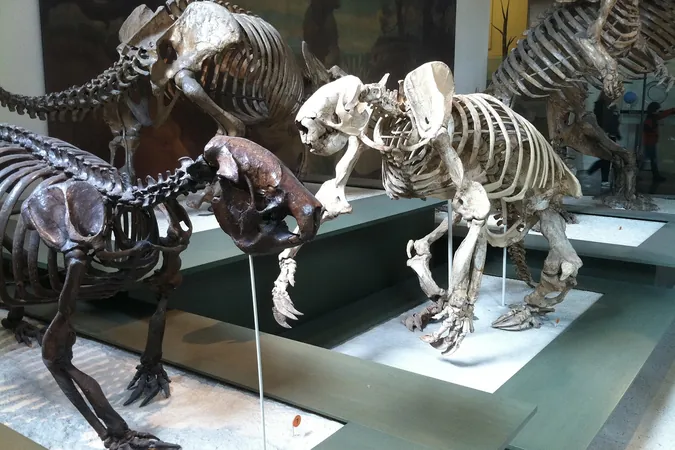
The Rise and Fall of the Colossal Sloths: What Caused Their Giant Size and Mysterious Extinction?
2025-05-23
Author: Kai
Imagine a world where giant sloths roamed the landscape, some as massive as Asian elephants! With their razor-sharp claws and prehensile tongues, these massive creatures snacked on treetops, but how did they become so enormous and why did they vanish?
A recent study published in the journal Science delves into the fascinating history of these prehistoric giants. While today's sloths are small and inhabit Central and South America, the past was populated by a diverse array of sloth species, stretching from the southern tip of Argentina up to Canada.
From Small Beginnings to Monstrous Size
In a breathtaking twist of evolution, ancient sloths grew to sizes reminiscent of grizzly bears—only five times larger! According to Rachel Narducci, a vertebrate paleontology expert at the Florida Museum of Natural History and coauthor of the study, these larger sloths were less inclined to climb trees due to the risk of falling. Instead, they adapted to a ground-dwelling lifestyle, using their formidable claws to dig caves for shelter.
Unraveling the Mystery of Their Gigantic Size
To uncover the secrets of their colossal size, researchers analyzed ancient sloth DNA and compared over 400 fossils. They traced their ancestry back 35 million years to when the first sloth, about the size of a large dog, emerged in what is now Argentina. For 20 million years, these sloths remained relatively small and terrestrial.
But a significant warming period around 16 million years ago prompted a remarkable transformation. As temperatures rose, sloths shrank to better maintain their body temperature.
The Climate Connection to Size Evolution
However, as the Earth cooled again, sloths grew larger and began migrating throughout the Americas, from Argentina all the way to Alaska and Canada. This expansion into new habitats posed challenges that led to further size increases.
Their massive bodies helped them conserve energy, retain water, and provide protection from predators—a vital survival strategy in diverse climates. Narducci noted that this adaptation was crucial, especially in open grasslands where larger size offered a defensive advantage.
The Pleistocene Era: Peak Size and Sudden Decline
Sloths reached their apex during the Pleistocene Ice Ages, which lasted from around 3 million years ago until about 12,000 years ago. Strikingly, it was right before this period of colossal stature that they disappeared.
Could Humans Be the Culprit?
While scientists aren’t entirely sure what caused their extinction, theories abound. Early humans migrated to the Americas approximately 20,000 years ago, and the large ground-dwelling sloths likely became prime targets for these new hunters. As a result, being large and grounded turned into a severe disadvantage.
Although the colossal sloths were some of the first to go, tree-dwelling sloths were not exempt from this fate; many species became extinct over time. A couple of species managed to survive in the Caribbean until roughly 4,500 years ago—until humans ultimately wiped them out.
The Legacy of the Sloths
Today, sloths are a mere shadow of their former size, found primarily in Central and South America. Thankfully, they have largely escaped the peril of extinction—no longer on the menu for early humans!
As we explore the history of these gentle giants, we can’t help but wonder what other secrets the past holds in store.





 Brasil (PT)
Brasil (PT)
 Canada (EN)
Canada (EN)
 Chile (ES)
Chile (ES)
 Česko (CS)
Česko (CS)
 대한민국 (KO)
대한민국 (KO)
 España (ES)
España (ES)
 France (FR)
France (FR)
 Hong Kong (EN)
Hong Kong (EN)
 Italia (IT)
Italia (IT)
 日本 (JA)
日本 (JA)
 Magyarország (HU)
Magyarország (HU)
 Norge (NO)
Norge (NO)
 Polska (PL)
Polska (PL)
 Schweiz (DE)
Schweiz (DE)
 Singapore (EN)
Singapore (EN)
 Sverige (SV)
Sverige (SV)
 Suomi (FI)
Suomi (FI)
 Türkiye (TR)
Türkiye (TR)
 الإمارات العربية المتحدة (AR)
الإمارات العربية المتحدة (AR)